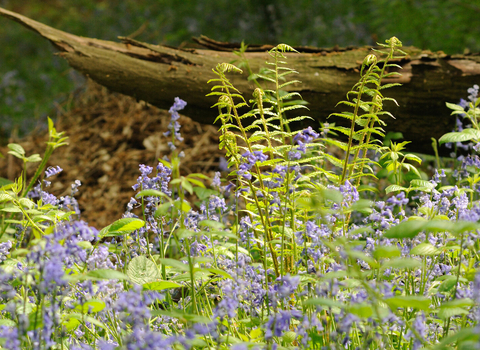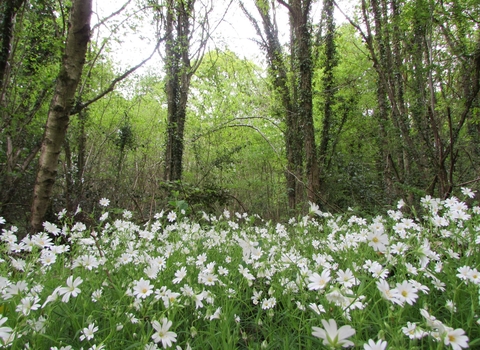
false - Jon Hawkins - Surrey Hills Photography
Llandefaelog Wood
Location
Know before you go
Dogs
When to visit
Opening times
Open access reserve.Best time to visit
Spring, summer and autumnAbout the reserve
What to look out for
In March to April the path along the southern side of the reserve is surrounded by beautiful wild daffodils. Later on in May, the floor of the reserve is carpeted with the blues and purples of bluebells with their wonderful scent. These contrast with the fresh greens of newly opened leaves. Look out for the occasional white bluebell.
The distinctive piping call of the nuthatch and the laughter-like “yaffle” call of the green woodpecker can often be heard across this beautiful woodland. In spring and summer, the delightful pied flycatcher can be seen with its distinctive black and white colours. Children from nearby Cradoc School have made nest boxes for these birds which can be seen attached to the trunks of trees.
There are two small ponds in the reserve, which are attractive to frogs and toads. They were created to increase the number of flying insects in the reserve, such as midges, which are a food supply for bats.
Species and habitats:
Habitats
Lowland Mixed Deciduous Woodland, Ponds
Species
Adder's-Tongue, Ash, Beech, Blue Tit, Bluebell, Bracken, Cock's foot, Common Frog, Common Toad, Creeping Buttercup, Crested Dog's tail, Daisy, Dormouse, Downy Birch, Elder, Green Woodpecker, Green-veined White, Grey Squirrel, Hart's-Tongue, Hawthorn, Hazel, Hogweed, Holly, Honey Bee, Honeysuckle, Ivy, Lady-fern, Lesser Celandine, Male-fern, Meadow Buttercup, Nuthatch, Pied Flycatcher, Polypody, Rabbit, Robin, Rowan, Sessile Oak, Seven-spot Ladybird, Silver Birch, Sweet Vernal-grass, Sycamore, White Clover, Wild Daffodil, Wood Mouse, Wood Pigeon, Yew, Yorkshire-fog


